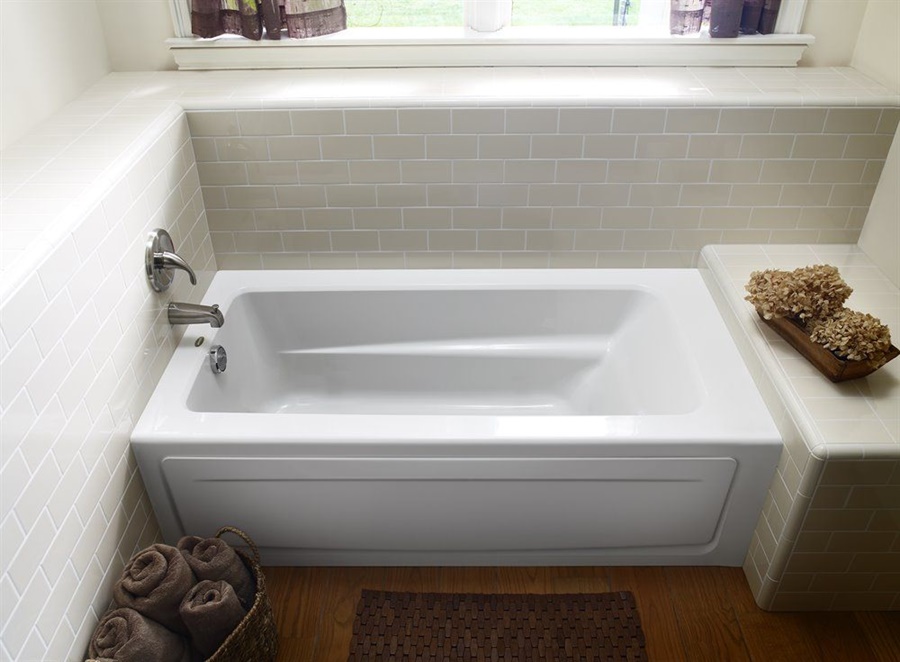When it comes to remodeling or building a bathroom, one of the most common questions homeowners ask is: “How long is a standard bathtub?” Understanding the exact dimensions of bathtubs is crucial for space planning, plumbing layout, and achieving a comfortable, functional bathing experience. In this detailed guide, we will break down everything you need to know about standard bathtub sizes, variations by type, installation requirements, and much more.
Standard Bathtub Dimensions: The Industry Norms
The standard bathtub size in the United States typically measures 60 inches (5 feet) in length, 30 inches in width, and 14 to 16 inches in depth. This dimension is designed to fit most residential bathrooms and provides enough space for an adult to bathe comfortably.
However, these measurements can vary slightly depending on the type and style of the bathtub, as well as the manufacturer.
Types of Bathtubs and Their Dimensions
1. Alcove Bathtubs (Standard Tubs)
Alcove bathtubs, also known as recessed bathtubs, are the most common type installed in homes. These tubs are enclosed on three sides and open on the fourth, making them ideal for small bathrooms.
Typical Size: 60 inches long x 30 inches wide x 14–16 inches deep
Installation: Built into a framed enclosure
Best For: Standard residential bathrooms with limited space
2. Drop-In Bathtubs
Drop-in bathtubs are placed into a pre-built deck or enclosure. These tubs offer more design flexibility but require more space.
Typical Size: 60–72 inches long x 30–36 inches wide x 16–20 inches deep
Installation: Requires a custom surround or platform
Best For: Larger bathrooms with luxury layouts
3. Freestanding Bathtubs
Freestanding tubs are not attached to any walls and can be placed anywhere in the bathroom where plumbing allows. These tubs often serve as a centerpiece.
Typical Size: 55–72 inches long x 27–32 inches wide x 15–20 inches deep
Installation: Requires exposed plumbing or floor-mounted fixtures
Best For: Spacious, upscale bathrooms
4. Corner Bathtubs
Corner bathtubs are uniquely shaped to fit into corners and offer a luxurious feel. They can often accommodate two bathers.
Typical Size: 48–72 inches in length x 48–60 inches wide x 18–22 inches deep
Installation: Fitted into the corner with specialized framing
Best For: Master bathrooms with ample floor space
5. Soaking Tubs
Designed for relaxation, soaking tubs are deeper than standard models, allowing users to be fully submerged.
Typical Size: 60–72 inches long x 30–36 inches wide x 20–25 inches deep
Installation: Varies (freestanding, alcove, or drop-in)
Best For: Therapeutic or spa-like bathing experiences
Length Variations by Region and Manufacturer
While 60 inches is the common standard in North America, bathtub lengths may differ in other parts of the world:
Europe and Asia: Standard bathtubs can be shorter, averaging 55 inches (140 cm)
Custom or Compact Models: Some manufacturers produce 48-inch bathtubs for small apartments or powder rooms
Extra-Long Bathtubs: Available in sizes up to 72 inches (6 feet) or longer for luxury and comfort
When selecting a tub, always refer to the manufacturer’s specifications, which will provide precise measurements including overall dimensions, soaking depth, and required installation clearance.
Bathtub Depth: How Deep Should a Bathtub Be?
The depth of a bathtub significantly affects the comfort of your bathing experience. Most standard tubs offer a soaking depth of 12 to 14 inches, which is enough to submerge the body halfway.
Deep soaking tubs and luxury models offer a soaking depth of 20 to 25 inches, ideal for full-body immersion and relaxation.
Specialty Bathtubs and Their Measurements
Walk-In Tubs
Designed for accessibility, walk-in bathtubs feature a door and built-in seat.
Typical Size: 48–60 inches long x 28–32 inches wide x 36 inches tall
Best For: Elderly or mobility-impaired individuals
Whirlpool or Jacuzzi Tubs
Equipped with jets for hydrotherapy, these tubs often come in larger sizes.
Typical Size: 60–72 inches long x 32–36 inches wide x 18–24 inches deep
Best For: Spa-inspired bathrooms and physical therapy
Measuring for Bathtub Installation
To ensure a perfect fit, accurate measurement is essential. Here’s what you need to measure:
Length: Measure wall to wall where the tub will be installed
Width: From the back wall to the front edge of the tub alcove
Depth: From the bottom of the basin to the overflow drain
Height Clearance: Consider ceiling height and the height of the tub apron
Pro tip: Always account for framing, tiling, and plumbing allowances when planning for bathtub installation.
Space Requirements Around the Bathtub
According to building codes and comfort guidelines:
Allow at least 24 inches of clearance in front of the tub for easy access
Leave 15 inches of space from the tub’s center to any adjacent fixtures (toilet, sink, etc.)
For freestanding tubs, maintain 4–6 inches of space around all sides for cleaning and aesthetics
Choosing the Right Bathtub Size for Your Bathroom
Choosing the ideal bathtub size involves balancing bathroom layout, user needs, and aesthetic preferences. Consider the following:
Small Bathrooms: Opt for a 48–54 inch compact tub
Medium Bathrooms: Standard 60-inch tubs are ideal
Large Bathrooms: Explore soaking tubs or freestanding models up to 72 inches
Height of Users: Taller individuals may prefer a longer and deeper tub for comfort
Conclusion
While the standard bathtub length is 60 inches, there are countless variations to accommodate every type of bathroom, user preference, and lifestyle. Understanding these dimensions helps ensure a perfect fit, both physically and stylistically, for your space.
Investing in the right size bathtub not only improves your daily comfort but also adds value to your home by enhancing bathroom functionality and aesthetic appeal.

